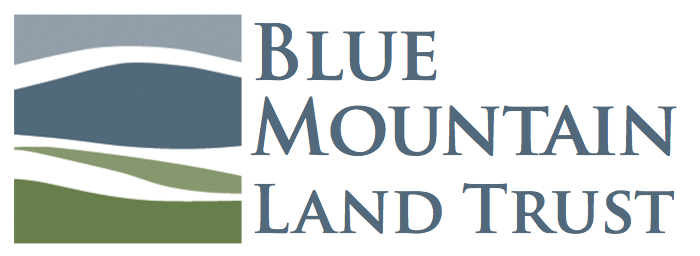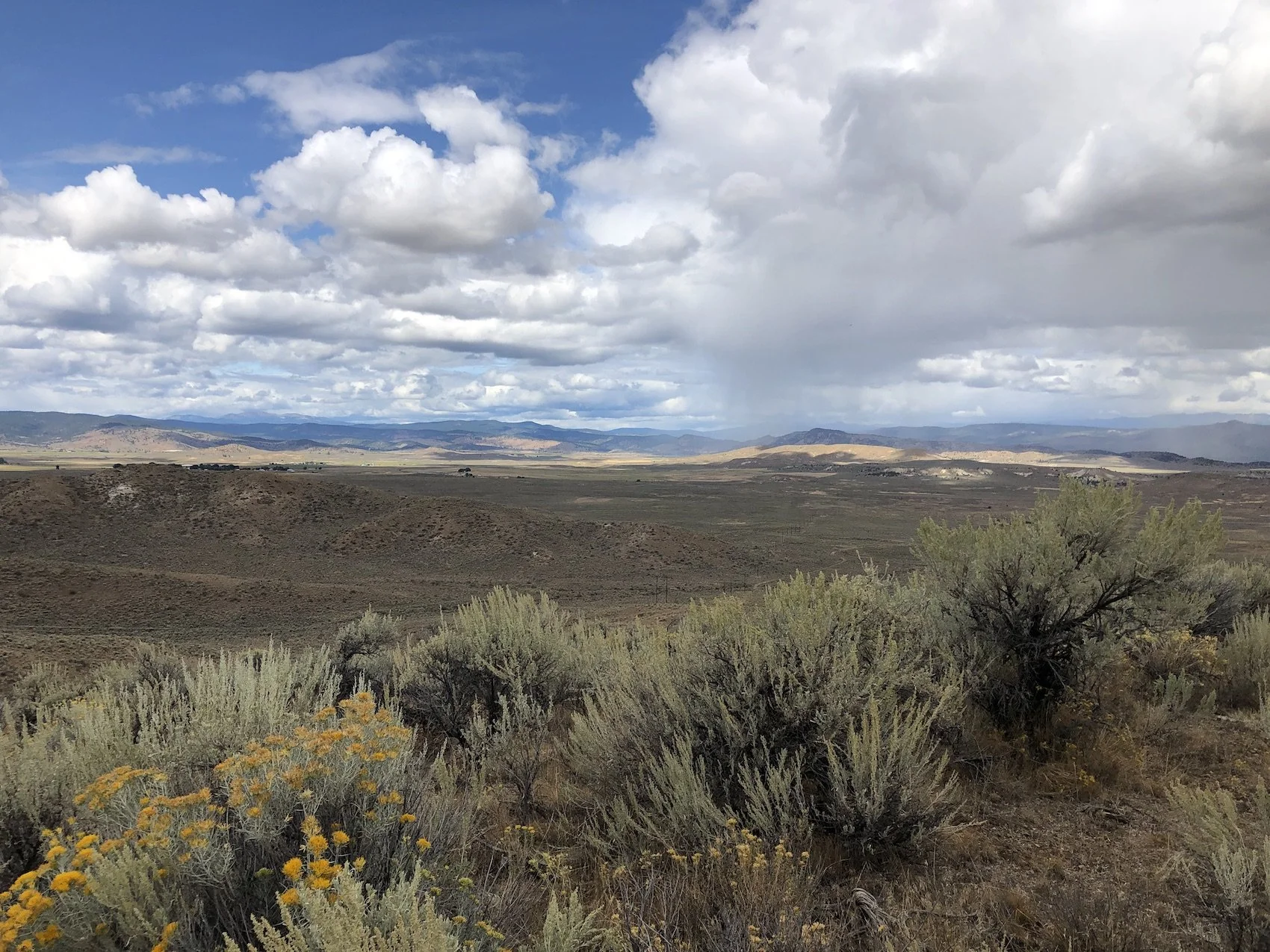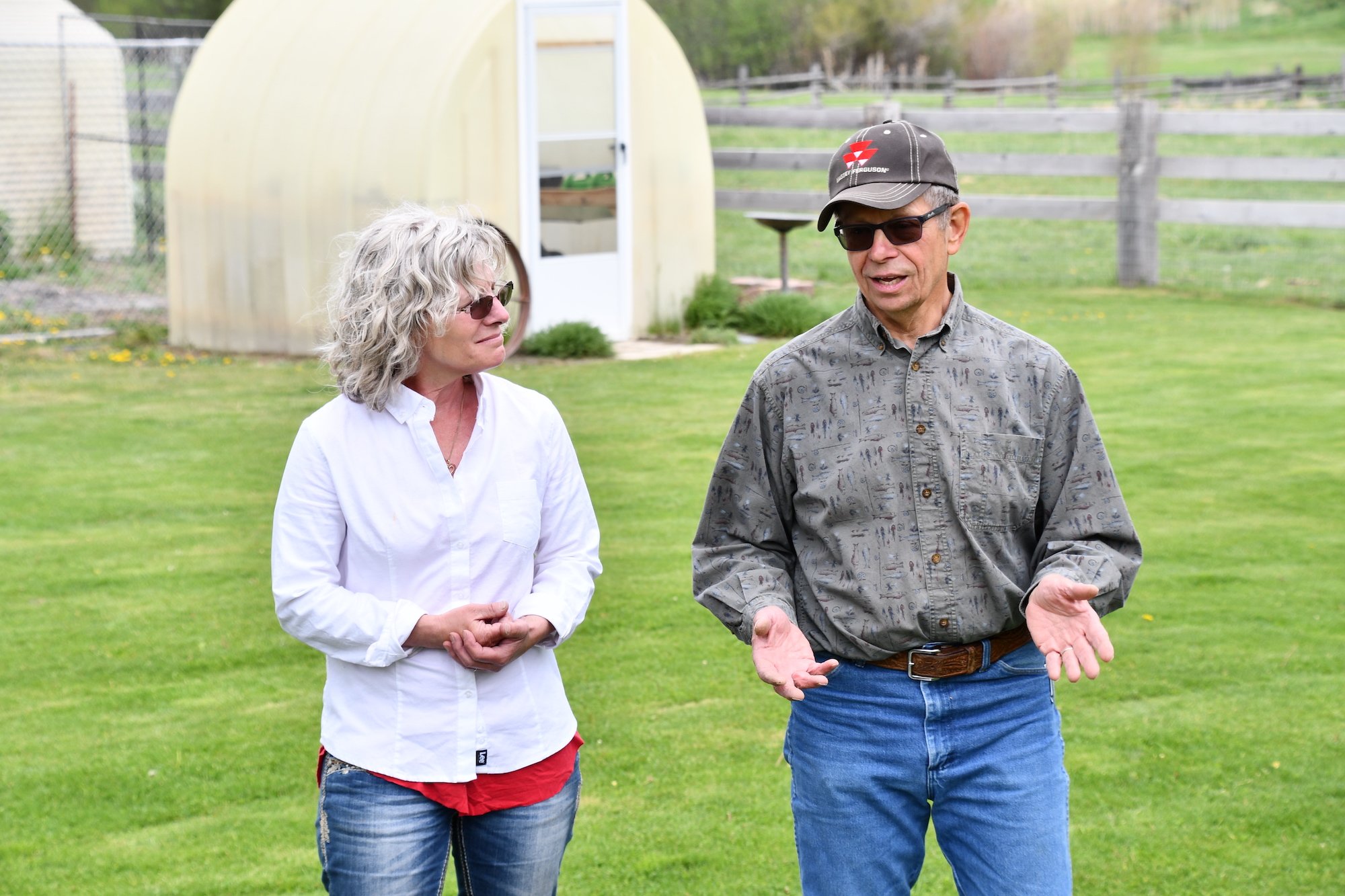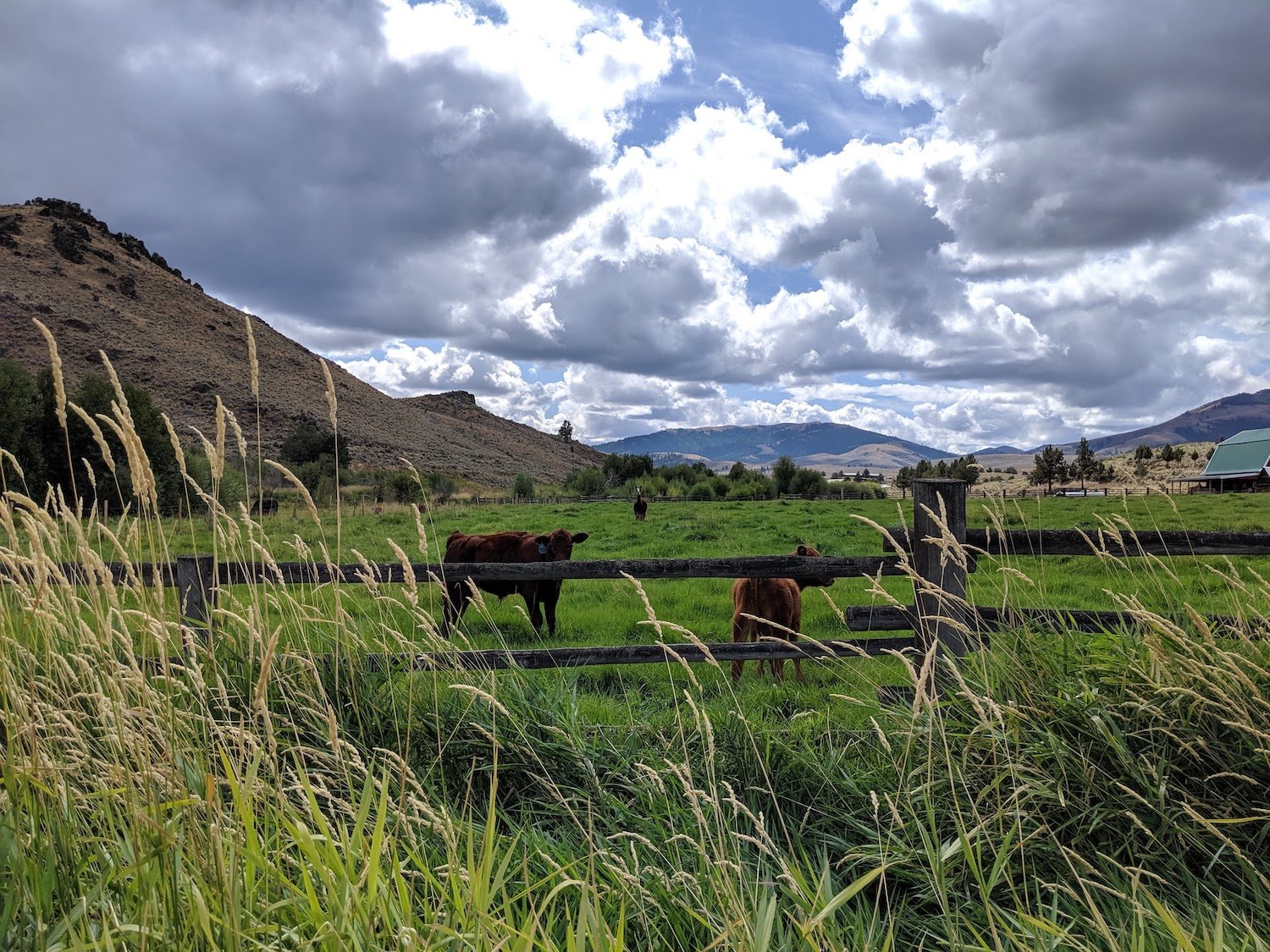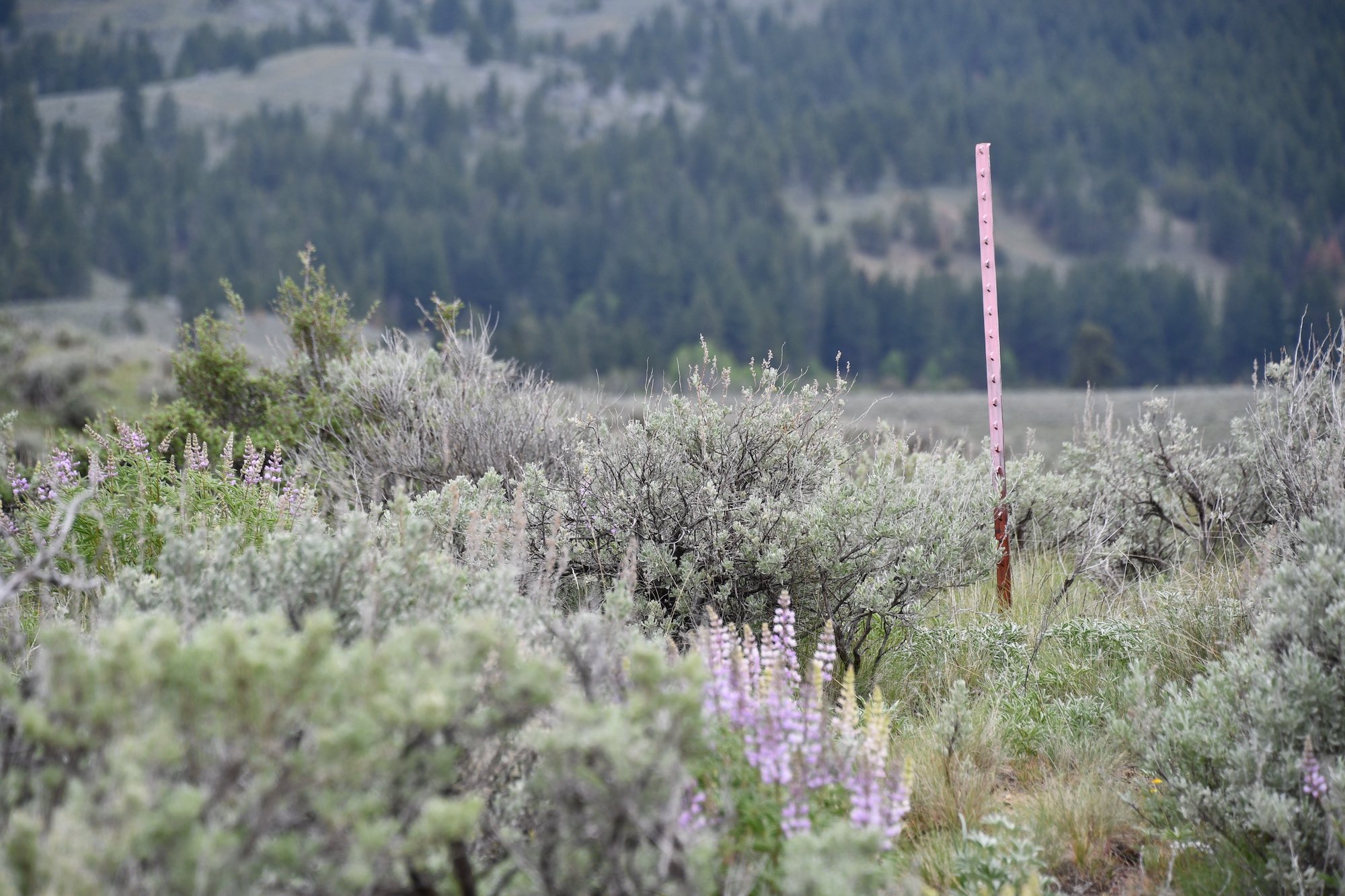Sustaining the Sagebrush Sea
For the Bennett Family, agriculture and conservation go hand in hand.
When you step outside in Unity, Oregon, the smell of sage permeates the air. The surrounding hillsides seem to move on their own as bunchgrasses and sagebrush wave in the breeze. Tucked in a valley along West Camp Creek, the Secret Valley Ranch stretches from the Wallowa Whitman National Forest on its southern border to Higgins Reservoir in the north. The Elkhorn Mountains rise on the distant skyline, which seems to go on forever. And now, so will Secret Valley Ranch. Earlier this year, the Blue Mountain Land Trust completed a conservation easement in partnership with the Bennett family to permanently protect one of the greatest ranches in Eastern Oregon.
The Blue Mountain Land Trust (BMLT) completed a conservation easement on the Secret Valley Ranch, after more than four and a half years of project development. A conservation easement is a voluntary, legal agreement between a private landowner and a land trust that places permanent restrictions on the land to limit certain activities, development, or subdivision of the property. It may also require stewarding the land in a particular way, leading to greater conservation benefits for fish and wildlife, agricultural viability, and other important resources.
BMLT first met the Bennetts in the fall of 2017 at their home on the vast 8,877-acre ranch. For more than five years, Mark and Patti Bennett searched for a land trust partner to help secure their ranch’s future. They were invested in finding a way to protect the property’s resident Greater sage-grouse population while also maintaining the working cattle and haying operation.
As landowners, they had been stewarding their property for decades to improve the grassland conditions for birds and cattle. For the Bennetts, conservation, and agriculture go hand in hand. Their tireless efforts to restore, protect, and improve the fragile ecosystem have built a model for other landowners to follow.
“We wanted to protect the land for the following generation. We went through the process with the family and realized they weren’t going to come back and run the ranch, and we realized the ranch would be really vulnerable. There was the potential that the property could be segmented,” said Mark Bennett. “One of the goals that we set was, not only would there be conservation protections, but that it would be an economically viable ranching operation.”
Throughout the years, the Bennett project completed many improvement projects across Secret Valley’s vast landscape. Their goals were two-fold: safeguard the property’s sage-grouse population, improve its habitat as populations drastically declined throughout the Western United States, and maintain their family’s cattle operation and agricultural business. As they worked to remove invasive plant species, treat encroaching juniper, plant riparian vegetation along five miles of West Camp Creek, and install wildlife-friendly fencing, they realized the mutual benefits of improved ecosystem function.
“The connection with the land and the sagebrush sea we live in is so important. The protection, enhancement, and strengthening of the land are just as important. Conservation practices really made us more efficient and better producers,” said Bennett.
The Bennetts’ approach to rotational grazing, consistent rangeland monitoring, and adaptive management techniques are obvious indicators that Mark and Patti have led both their business and land stewardship models with future generations of animal and human inhabitants in mind.
The conservation easement protects both sides of the ranch, recognizing its high-quality sagebrush steppe habitat and redband trout and sage-grouse inhabitants and its economic and social importance as a holistically grazed working cattle ranch. The project was funded by funding agencies representing both interests—the Oregon Watershed Enhancement Board (OWEB) and the Natural Resources Conservation Service (NRCS). The easement blends ecological protections and habitat goals with the operational needs of a ranch, incorporating a grazing management plan, and continuing the rangeland monitoring at sites Mark established years ago.
This conservation project is the largest and most complicated in BMLT history. Besides its staggering size, the project’s complex grassland and riparian ecosystems, extensive restoration work, and the dynamics of an agricultural business required hundreds of hours of driving and hiking around the ranch and conversation with the Bennetts.
Protecting the interconnectivity between conservation and agricultural values requires building trust and an ongoing partnership between the Bennett family and the organization. BMLT will continue to monitor the conservation easement annually in perpetuity, ensuring compliance with the conservation easement and maintenance of the property’s high-quality resources.
“I’m really excited about the partnership with BMLT. They support our goals for the ranch,” said Bennett. “We believe we need to be good stewards of the landscape that we were entrusted with. We’ve worked hard to make what we feel is one of the best ranches around here, better.”
As he and Patti look toward the future and the promise of another family one day taking ownership, they can be assured their efforts will leave a Secret Valley Ranch with bountiful resources for the next generation of ranching.
Secret Valley Ranch was one of the first properties Amanda Martino, BMLT Executive Director, visited when she joined the conservation team in 2017. She spent four and a half years working with the Bennetts to complete the project.
“There’s a particular ranch road that leads up to the western boundary fence line. From that vantage point, sage-grouse leks are visible on the adjacent property and you can look over the nesting grounds on Secret Valley Ranch. Turning north, you can see down into the hay ground and pasture along West Camp Creek. The forested hills of the Wallowa Whitman National Forest rise on the right and Murray Peak towers on the northern side of the property on the left,” said Martino.
“I’ve had a lot of conversations with Mark at that fence line, talking about his family’s history on the ranch, their hopes for its future, stories about various parts of the property you can see and all of the people they’ve worked with out there. We’ve taken funders, partner organizations, and legislators to that fence line.”
“For me, that view encapsulates the magnitude of the choices the Bennetts have made over decades. You can see how many critical resources they impact with their stewardship. The landscape is always moving in that view, whether it be animals, sagebrush, or shadows on the rock formations. The Bennetts put so much energy, time, and thoughtfulness into every management decision they make. Looking out across the results of that stewardship, it’s breathtaking.”
